Main Page
Table of content
Copyright
Addison-Wesley Professional Computing Series
Foreword
Preface
Introduction
Changes from the Second Edition
Using This Book
Source Code and Errata Availability
Acknowledgments
Part 1: Introduction and TCP/IP
Chapter 1. Introduction
1.1 Introduction
1.2 A Simple Daytime Client
1.3 Protocol Independence
1.4 Error Handling: Wrapper Functions
1.5 A Simple Daytime Server
1.6 Roadmap to Client/Server Examples in the Text
1.7 OSI Model
1.8 BSD Networking History
1.9 Test Networks and Hosts
1.10 Unix Standards
1.11 64-Bit Architectures
1.12 Summary
Exercises
Chapter 2. The Transport Layer: TCP, UDP, and SCTP
2.1 Introduction
2.2 The Big Picture
2.3 User Datagram Protocol (UDP)
2.4 Transmission Control Protocol (TCP)
2.5 Stream Control Transmission Protocol (SCTP)
2.6 TCP Connection Establishment and Termination
2.7 TIME_WAIT State
2.8 SCTP Association Establishment and Termination
2.9 Port Numbers
2.10 TCP Port Numbers and Concurrent Servers
2.11 Buffer Sizes and Limitations
2.12 Standard Internet Services
2.13 Protocol Usage by Common Internet Applications
2.14 Summary
Exercises
Part 2: Elementary Sockets
Chapter 3. Sockets Introduction
3.1 Introduction
3.2 Socket Address Structures
3.3 Value-Result Arguments
3.4 Byte Ordering Functions
3.5 Byte Manipulation Functions
3.6 'inet_aton', 'inet_addr', and 'inet_ntoa' Functions
3.7 'inet_pton' and 'inet_ntop' Functions
3.8 'sock_ntop' and Related Functions
3.9 'readn', 'writen', and 'readline' Functions
3.10 Summary
Exercises
Chapter 4. Elementary TCP Sockets
4.1 Introduction
4.2 'socket' Function
4.3 'connect' Function
4.4 'bind' Function
4.5 'listen' Function
4.6 'accept' Function
4.7 'fork' and 'exec' Functions
4.8 Concurrent Servers
4.9 'close' Function
4.10 'getsockname' and 'getpeername' Functions
4.11 Summary
Exercises
Chapter 5. TCP Client/Server Example
5.1 Introduction
5.2 TCP Echo Server: 'main' Function
5.3 TCP Echo Server: 'str_echo' Function
5.4 TCP Echo Client: 'main' Function
5.5 TCP Echo Client: 'str_cli' Function
5.6 Normal Startup
5.7 Normal Termination
5.8 POSIX Signal Handling
5.9 Handling 'SIGCHLD' Signals
5.10 'wait' and 'waitpid' Functions
5.11 Connection Abort before 'accept' Returns
5.12 Termination of Server Process
5.13 'SIGPIPE' Signal
5.14 Crashing of Server Host
5.15 Crashing and Rebooting of Server Host
5.16 Shutdown of Server Host
5.17 Summary of TCP Example
5.18 Data Format
5.19 Summary
Exercises
Chapter 6. I/O Multiplexing: The 'select' and 'poll' Functions
6.1 Introduction
6.2 I/O Models
6.3 'select' Function
6.4 'str_cli' Function (Revisited)
6.5 Batch Input and Buffering
6.6 'shutdown' Function
6.7 'str_cli' Function (Revisited Again)
6.8 TCP Echo Server (Revisited)
6.9 'pselect' Function
6.10 'poll' Function
6.11 TCP Echo Server (Revisited Again)
6.12 Summary
Exercises
Chapter 7. Socket Options
7.1 Introduction
7.2 'getsockopt' and 'setsockopt' Functions
7.3 Checking if an Option Is Supported and Obtaining the Default
7.4 Socket States
7.5 Generic Socket Options
7.6 IPv4 Socket Options
7.7 ICMPv6 Socket Option
7.8 IPv6 Socket Options
7.9 TCP Socket Options
7.10 SCTP Socket Options
7.11 'fcntl' Function
7.12 Summary
Exercises
Chapter 8. Elementary UDP Sockets
8.1 Introduction
8.2 'recvfrom' and 'sendto' Functions
8.3 UDP Echo Server: 'main' Function
8.4 UDP Echo Server: 'dg_echo' Function
8.5 UDP Echo Client: 'main' Function
8.6 UDP Echo Client: 'dg_cli' Function
8.7 Lost Datagrams
8.8 Verifying Received Response
8.9 Server Not Running
8.10 Summary of UDP Example
8.11 'connect' Function with UDP
8.12 'dg_cli' Function (Revisited)
8.13 Lack of Flow Control with UDP
8.14 Determining Outgoing Interface with UDP
8.15 TCP and UDP Echo Server Using 'select'
8.16 Summary
Exercises
Chapter 9. Elementary SCTP Sockets
9.1 Introduction
9.2 Interface Models
9.3 'sctp_bindx' Function
9.4 'sctp_connectx' Function
9.5 'sctp_getpaddrs' Function
9.6 'sctp_freepaddrs' Function
9.7 'sctp_getladdrs' Function
9.8 'sctp_freeladdrs' Function
9.9 'sctp_sendmsg' Function
9.10 'sctp_recvmsg' Function
9.11 'sctp_opt_info' Function
9.12 'sctp_peeloff' Function
9.13 'shutdown' Function
9.14 Notifications
9.15 Summary
Exercises
Chapter 10. SCTP Client/Server Example
10.1 Introduction
10.2 SCTP One-to-Many-Style Streaming Echo Server: 'main' Function
10.3 SCTP One-to-Many-Style Streaming Echo Client: 'main' Function
10.4 SCTP Streaming Echo Client: 'str_cli' Function
10.5 Exploring Head-of-Line Blocking
10.6 Controlling the Number of Streams
10.7 Controlling Termination
10.8 Summary
Exercises
Chapter 11. Name and Address Conversions
11.1 Introduction
11.2 Domain Name System (DNS)
11.3 'gethostbyname' Function
11.4 'gethostbyaddr' Function
11.5 'getservbyname' and 'getservbyport' Functions
11.6 'getaddrinfo' Function
11.7 'gai_strerror' Function
11.8 'freeaddrinfo' Function
11.9 'getaddrinfo' Function: IPv6
11.10 'getaddrinfo' Function: Examples
11.11 'host_serv' Function
11.12 'tcp_connect' Function
11.13 'tcp_listen' Function
11.14 'udp_client' Function
11.15 'udp_connect' Function
11.16 'udp_server' Function
11.17 'getnameinfo' Function
11.18 Re-entrant Functions
11.19 'gethostbyname_r' and 'gethostbyaddr_r' Functions
11.20 Obsolete IPv6 Address Lookup Functions
11.21 Other Networking Information
11.22 Summary
Exercises
Part 3: Advanced Sockets
Chapter 12. IPv4 and IPv6 Interoperability
12.1 Introduction
12.2 IPv4 Client, IPv6 Server
12.3 IPv6 Client, IPv4 Server
12.4 IPv6 Address-Testing Macros
12.5 Source Code Portability
12.6 Summary
Exercises
Chapter 13. Daemon Processes and the 'inetd' Superserver
13.1 Introduction
13.2 'syslogd' Daemon
13.3 'syslog' Function
13.4 'daemon_init' Function
13.5 'inetd' Daemon
13.6 'daemon_inetd' Function
13.7 Summary
Exercises
Chapter 14. Advanced I/O Functions
14.1 Introduction
14.2 Socket Timeouts
14.3 'recv' and 'send' Functions
14.4 'readv' and 'writev' Functions
14.5 'recvmsg' and 'sendmsg' Functions
14.6 Ancillary Data
14.7 How Much Data Is Queued?
14.8 Sockets and Standard I/O
14.9 Advanced Polling
14.10 Summary
Exercises
Chapter 15. Unix Domain Protocols
15.1 Introduction
15.2 Unix Domain Socket Address Structure
15.3 'socketpair' Function
15.4 Socket Functions
15.5 Unix Domain Stream Client/Server
15.6 Unix Domain Datagram Client/Server
15.7 Passing Descriptors
15.8 Receiving Sender Credentials
15.9 Summary
Exercises
Chapter 16. Nonblocking I/O
16.1 Introduction
16.2 Nonblocking Reads and Writes: 'str_cli' Function (Revisited)
16.3 Nonblocking 'connect'
16.4 Nonblocking 'connect:' Daytime Client
16.5 Nonblocking 'connect:' Web Client
16.6 Nonblocking 'accept'
16.7 Summary
Exercises
Chapter 17. 'ioctl' Operations
17.1 Introduction
17.2 'ioctl' Function
17.3 Socket Operations
17.4 File Operations
17.5 Interface Configuration
17.6 'get_ifi_info' Function
17.7 Interface Operations
17.8 ARP Cache Operations
17.9 Routing Table Operations
17.10 Summary
Exercises
Chapter 18. Routing Sockets
18.1 Introduction
18.2 Datalink Socket Address Structure
18.3 Reading and Writing
18.4 'sysctl' Operations
18.5 'get_ifi_info' Function (Revisited)
18.6 Interface Name and Index Functions
18.7 Summary
Exercises
Chapter 19. Key Management Sockets
19.1 Introduction
19.2 Reading and Writing
19.3 Dumping the Security Association Database (SADB)
19.4 Creating a Static Security Association (SA)
19.5 Dynamically Maintaining SAs
19.6 Summary
Exercises
Chapter 20. Broadcasting
20.1 Introduction
20.2 Broadcast Addresses
20.3 Unicast versus Broadcast
20.4 'dg_cli' Function Using Broadcasting
20.5 Race Conditions
20.6 Summary
Exercises
Chapter 21. Multicasting
21.1 Introduction
21.2 Multicast Addresses
21.3 Multicasting versus Broadcasting on a LAN
21.4 Multicasting on a WAN
21.5 Source-Specific Multicast
21.6 Multicast Socket Options
21.7 'mcast_join' and Related Functions
21.8 'dg_cli' Function Using Multicasting
21.9 Receiving IP Multicast Infrastructure Session Announcements
21.10 Sending and Receiving
21.11 Simple Network Time Protocol (SNTP)
21.12 Summary
Exercises
Chapter 22. Advanced UDP Sockets
22.1 Introduction
22.2 Receiving Flags, Destination IP Address, and Interface Index
22.3 Datagram Truncation
22.4 When to Use UDP Instead of TCP
22.5 Adding Reliability to a UDP Application
22.6 Binding Interface Addresses
22.7 Concurrent UDP Servers
22.8 IPv6 Packet Information
22.9 IPv6 Path MTU Control
22.10 Summary
Exercises
Chapter 23. Advanced SCTP Sockets
23.1 Introduction
23.2 An Autoclosing One-to-Many-Style Server
23.3 Partial Delivery
23.4 Notifications
23.5 Unordered Data
23.6 Binding a Subset of Addresses
23.7 Determining Peer and Local Address Information
23.8 Finding an Association ID Given an IP Address
23.9 Heartbeating and Address Failure
23.10 Peeling Off an Association
23.11 Controlling Timing
23.12 When to Use SCTP Instead of TCP
23.13 Summary
Exercises
Chapter 24. Out-of-Band Data
24.1 Introduction
24.2 TCP Out-of-Band Data
24.3 'sockatmark' Function
24.4 TCP Out-of-Band Data Recap
24.5 Summary
Exercises
Chapter 25. Signal-Driven I/O
25.1 Introduction
25.2 Signal-Driven I/O for Sockets
25.3 UDP Echo Server Using 'SIGIO'
25.4 Summary
Exercises
Chapter 26. Threads
26.1 Introduction
26.2 Basic Thread Functions: Creation and Termination
26.3 'str_cli' Function Using Threads
26.4 TCP Echo Server Using Threads
26.5 Thread-Specific Data
26.6 Web Client and Simultaneous Connections (Continued)
26.7 Mutexes: Mutual Exclusion
26.8 Condition Variables
26.9 Web Client and Simultaneous Connections (Continued)
26.10 Summary
Exercises
Chapter 27. IP Options
27.1 Introduction
27.2 IPv4 Options
27.3 IPv4 Source Route Options
27.4 IPv6 Extension Headers
27.5 IPv6 Hop-by-Hop Options and Destination Options
27.6 IPv6 Routing Header
27.7 IPv6 Sticky Options
27.8 Historical IPv6 Advanced API
27.9 Summary
Exercises
Chapter 28. Raw Sockets
28.1 Introduction
28.2 Raw Socket Creation
28.3 Raw Socket Output
28.4 Raw Socket Input
28.5 'ping' Program
28.6 'traceroute' Program
28.7 An ICMP Message Daemon
28.8 Summary
Exercises
Chapter 29. Datalink Access
29.1 Introduction
29.2 BSD Packet Filter (BPF)
29.3 Datalink Provider Interface (DLPI)
29.4 Linux: 'SOCK_PACKET' and 'PF_PACKET'
29.5 'libpcap': Packet Capture Library
29.6 'libnet': Packet Creation and Injection Library
29.7 Examining the UDP Checksum Field
29.8 Summary
Exercises
Chapter 30. Client/Server Design Alternatives
30.1 Introduction
30.2 TCP Client Alternatives
30.3 TCP Test Client
30.4 TCP Iterative Server
30.5 TCP Concurrent Server, One Child per Client
30.6 TCP Preforked Server, No Locking Around 'accept'
30.7 TCP Preforked Server, File Locking Around 'accept'
30.8 TCP Preforked Server, Thread Locking Around 'accept'
30.9 TCP Preforked Server, Descriptor Passing
30.10 TCP Concurrent Server, One Thread per Client
30.11 TCP Prethreaded Server, per-Thread 'accept'
30.12 TCP Prethreaded Server, Main Thread 'accept'
30.13 Summary
Exercises
Chapter 31. Streams
31.1 Introduction
31.2 Overview
31.3 'getmsg' and 'putmsg' Functions
31.4 'getpmsg' and 'putpmsg' Functions
31.5 'ioctl' Function
31.6 Transport Provider Interface (TPI)
31.7 Summary
Exercises
Appendix A. IPv4, IPv6, ICMPv4, and ICMPv6
A.1 Introduction
A.2 IPv4 Header
A.3 IPv6 Header
A.4 IPv4 Addresses
A.5 IPv6 Addresses
A.6 Internet Control Message Protocols (ICMPv4 and ICMPv6)
Appendix B. Virtual Networks
B.1 Introduction
B.2 The MBone
B.3 The 6bone
B.4 IPv6 Transition: 6to4
Appendix C. Debugging Techniques
C.1 System Call Tracing
C.2 Standard Internet Services
C.3 'sock' Program
C.4 Small Test Programs
C.5 'tcpdump' Program
C.6 'netstat' Program
C.7 'lsof' Program
Appendix D. Miscellaneous Source Code
D.1 'unp.h' Header
D.2 'config.h' Header
D.3 Standard Error Functions
Appendix E. Solutions to Selected Exercises
Chapter 1
Chapter 2
Chapter 3
Chapter 4
Chapter 5
Chapter 6
Chapter 7
Chapter 8
Chapter 9
Chapter 10
Chapter 11
Chapter 12
Chapter 13
Chapter 14
Chapter 15
Chapter 16
Chapter 17
Chapter 18
Chapter 20
Chapter 21
Chapter 22
Chapter 24
Chapter 25
Chapter 26
Chapter 27
Chapter 28
Chapter 29
Chapter 30
Chapter 31
Bibliography
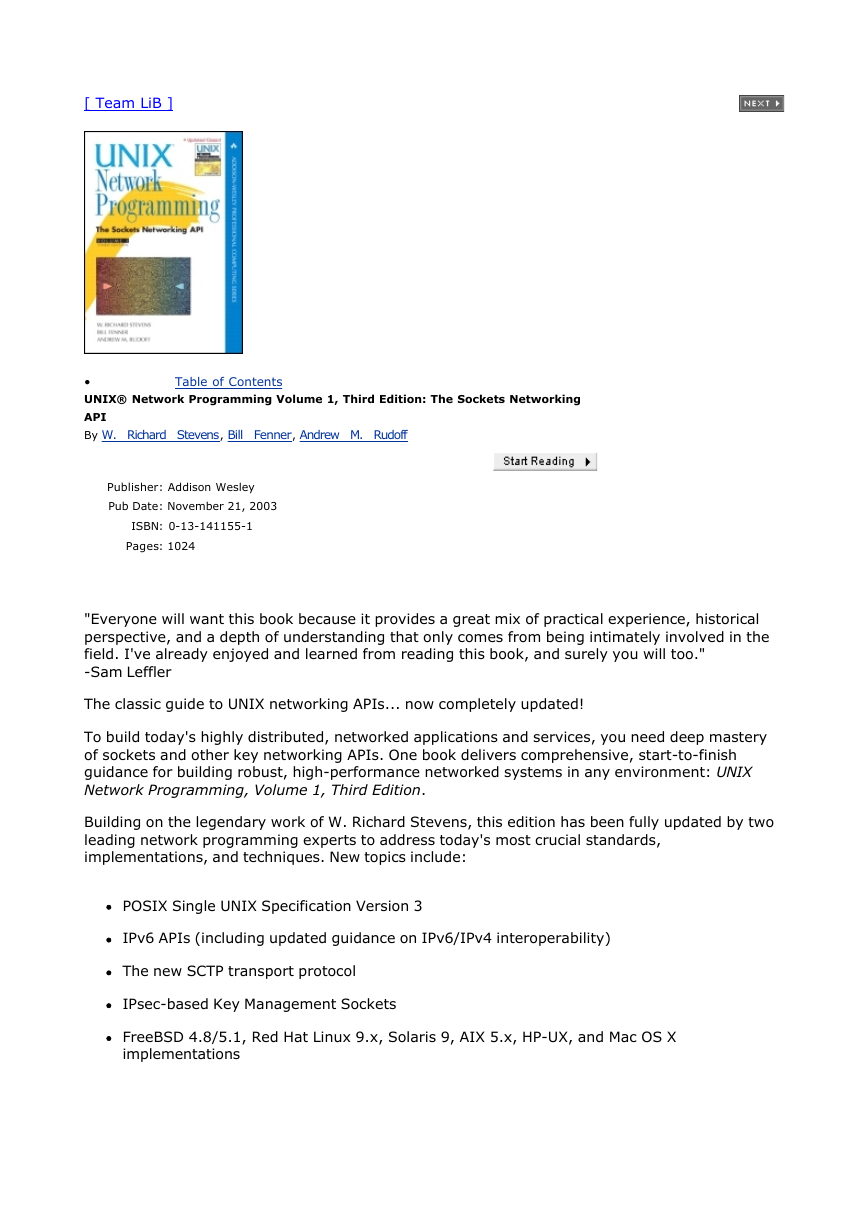
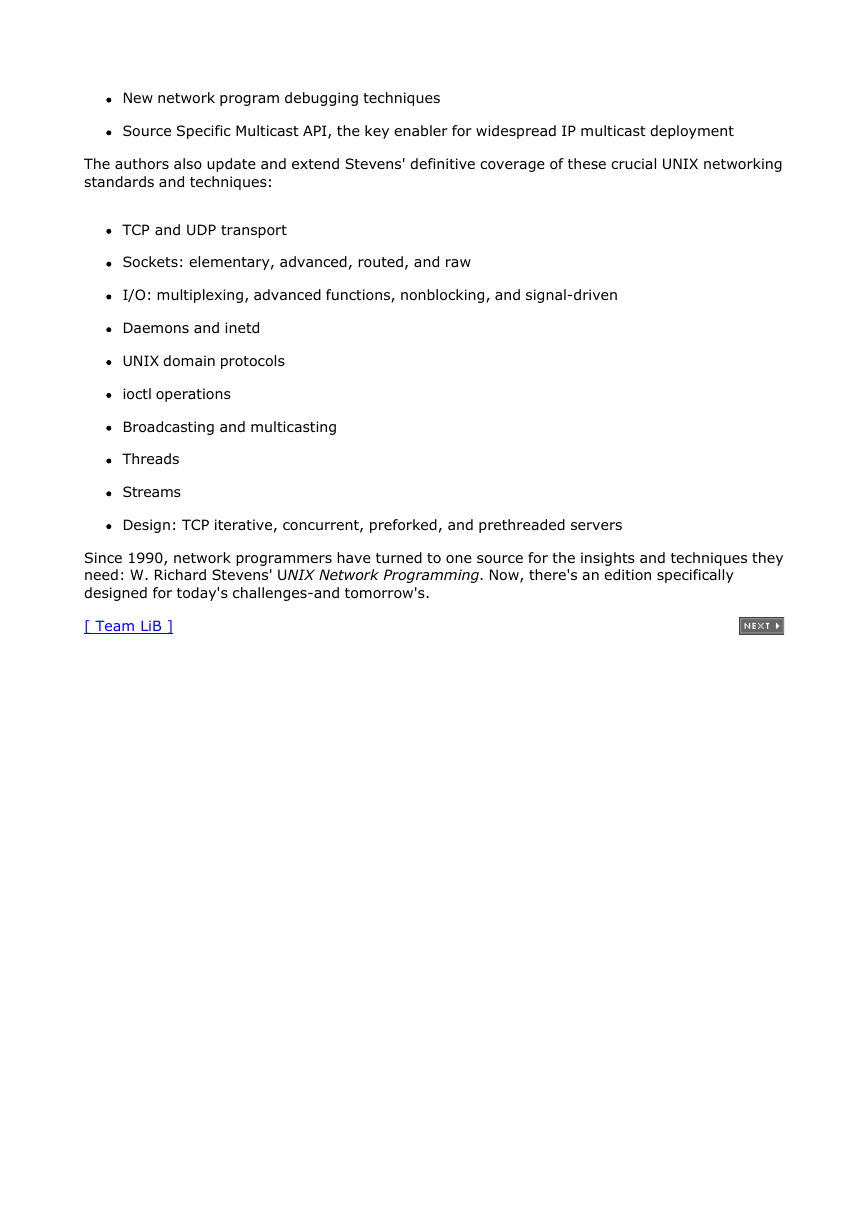
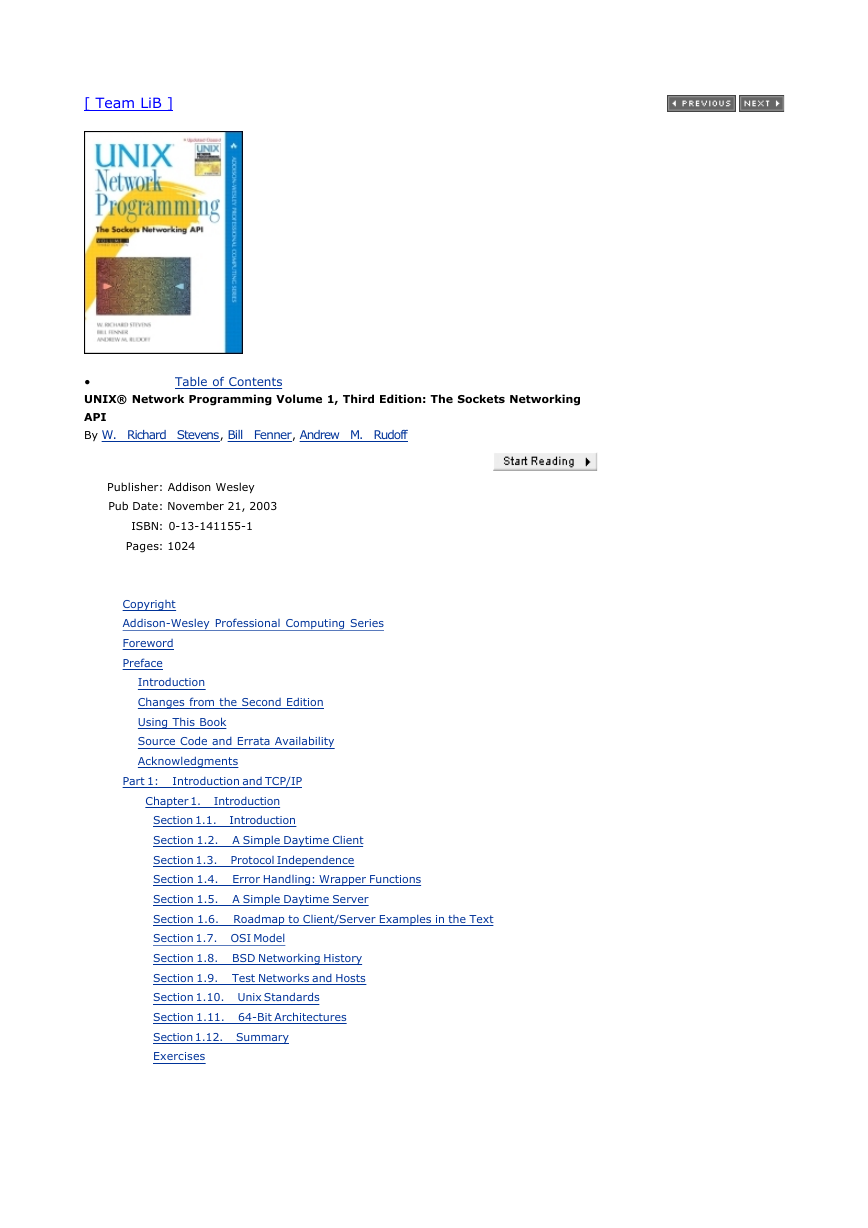


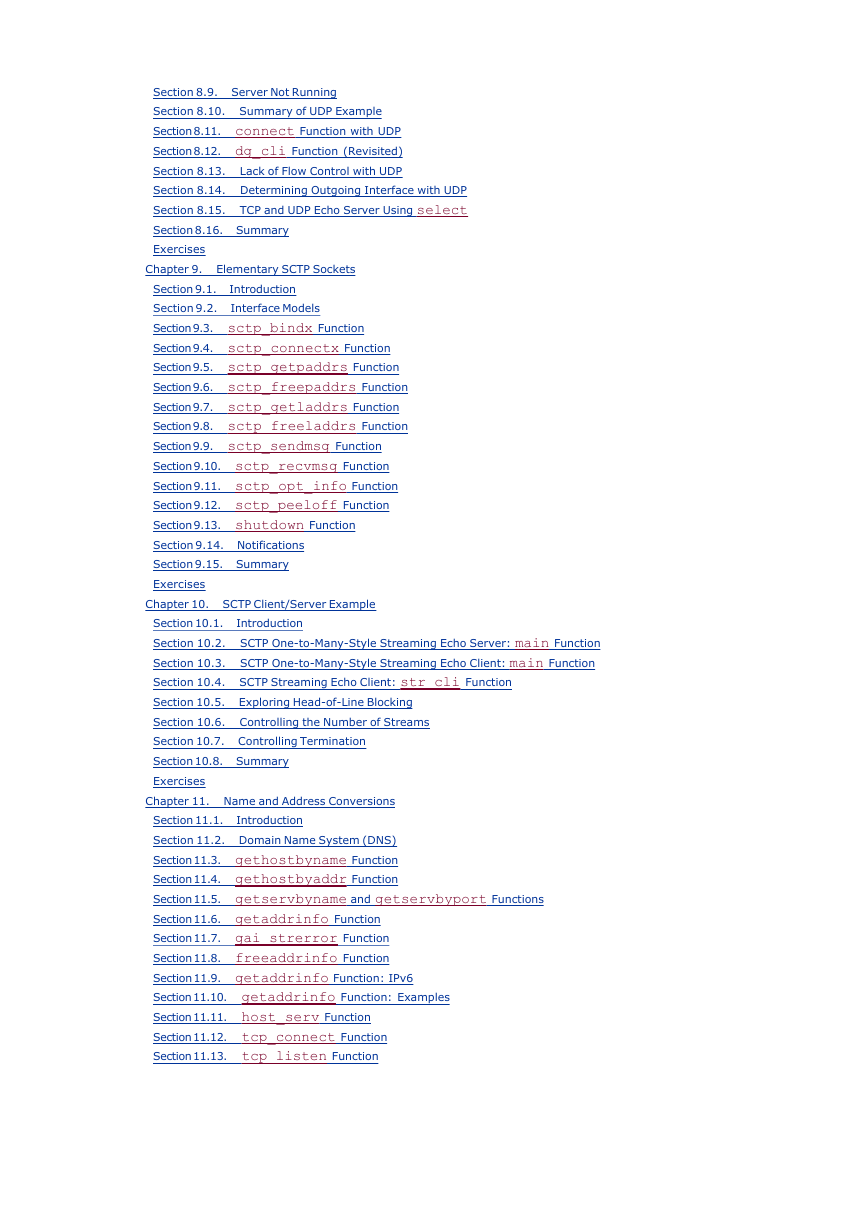
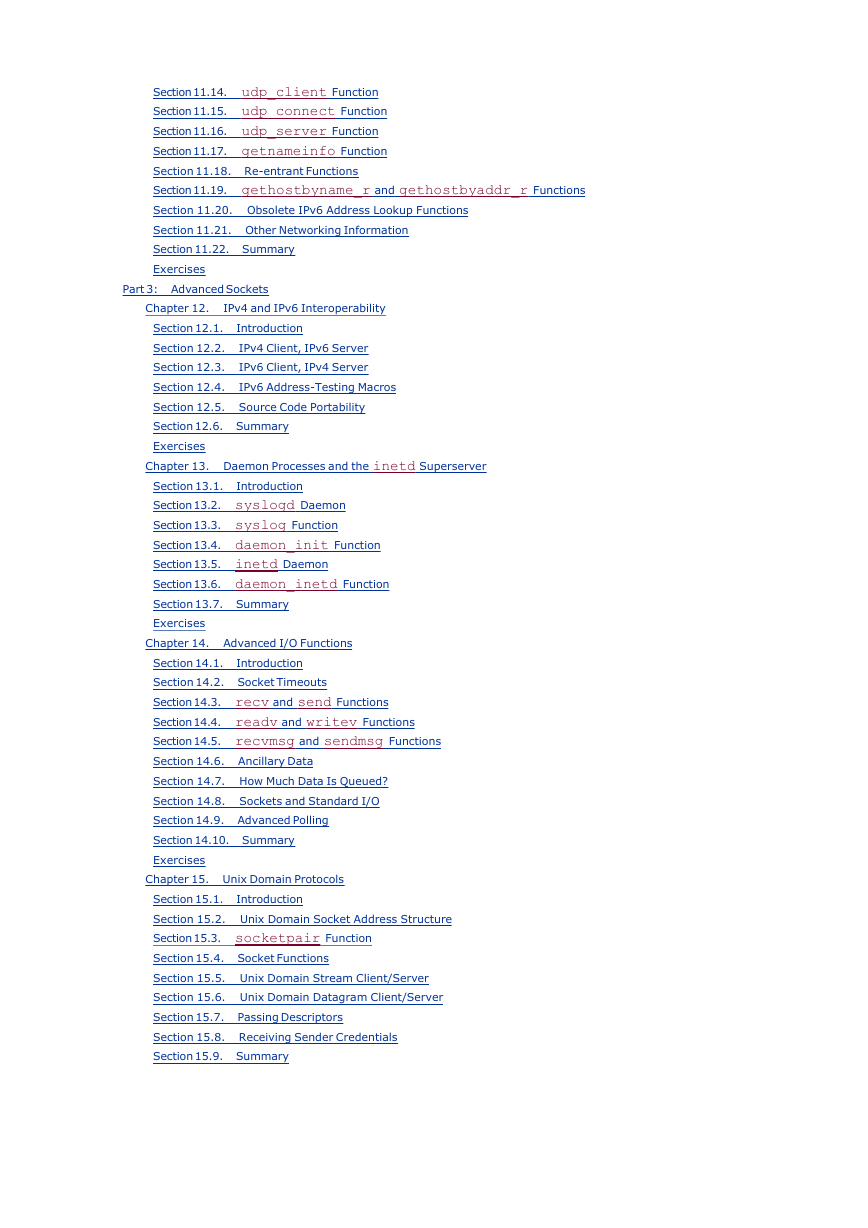
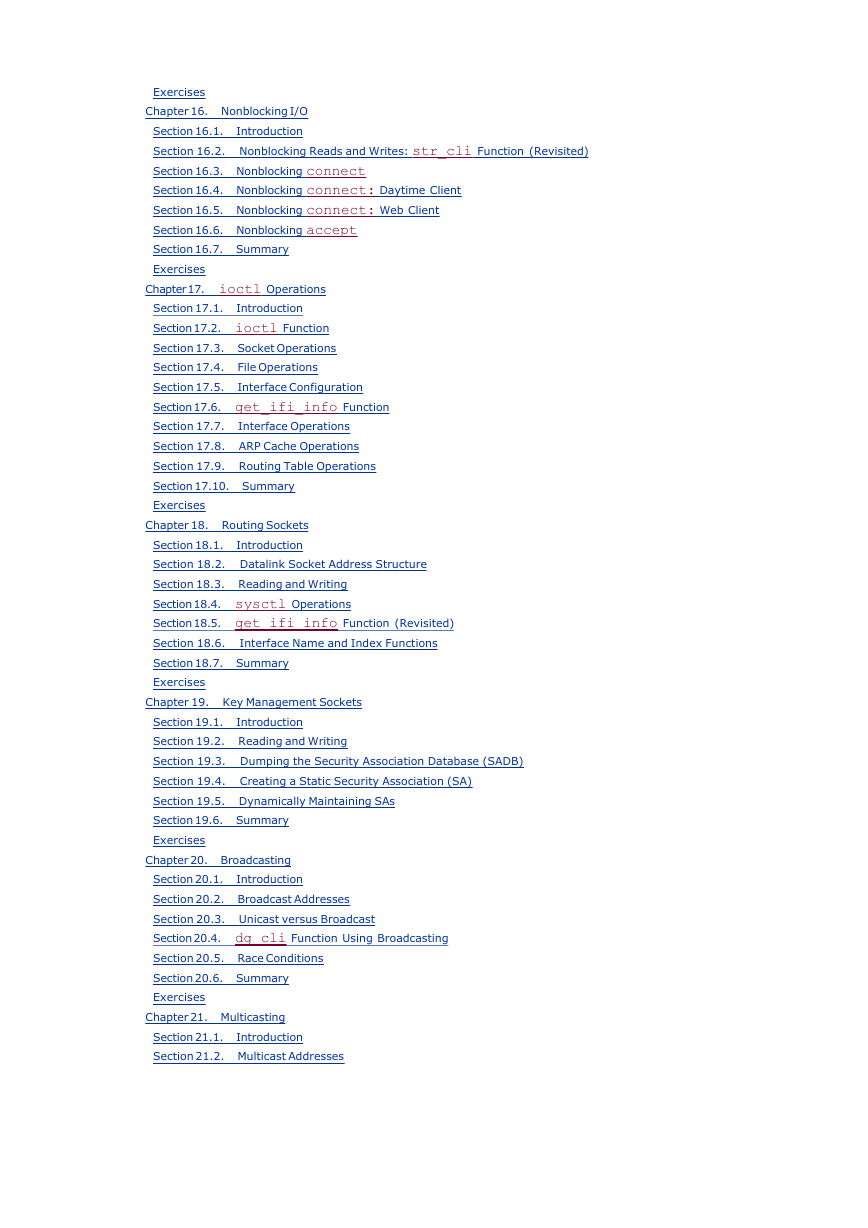








 2023年江西萍乡中考道德与法治真题及答案.doc
2023年江西萍乡中考道德与法治真题及答案.doc 2012年重庆南川中考生物真题及答案.doc
2012年重庆南川中考生物真题及答案.doc 2013年江西师范大学地理学综合及文艺理论基础考研真题.doc
2013年江西师范大学地理学综合及文艺理论基础考研真题.doc 2020年四川甘孜小升初语文真题及答案I卷.doc
2020年四川甘孜小升初语文真题及答案I卷.doc 2020年注册岩土工程师专业基础考试真题及答案.doc
2020年注册岩土工程师专业基础考试真题及答案.doc 2023-2024学年福建省厦门市九年级上学期数学月考试题及答案.doc
2023-2024学年福建省厦门市九年级上学期数学月考试题及答案.doc 2021-2022学年辽宁省沈阳市大东区九年级上学期语文期末试题及答案.doc
2021-2022学年辽宁省沈阳市大东区九年级上学期语文期末试题及答案.doc 2022-2023学年北京东城区初三第一学期物理期末试卷及答案.doc
2022-2023学年北京东城区初三第一学期物理期末试卷及答案.doc 2018上半年江西教师资格初中地理学科知识与教学能力真题及答案.doc
2018上半年江西教师资格初中地理学科知识与教学能力真题及答案.doc 2012年河北国家公务员申论考试真题及答案-省级.doc
2012年河北国家公务员申论考试真题及答案-省级.doc 2020-2021学年江苏省扬州市江都区邵樊片九年级上学期数学第一次质量检测试题及答案.doc
2020-2021学年江苏省扬州市江都区邵樊片九年级上学期数学第一次质量检测试题及答案.doc 2022下半年黑龙江教师资格证中学综合素质真题及答案.doc
2022下半年黑龙江教师资格证中学综合素质真题及答案.doc